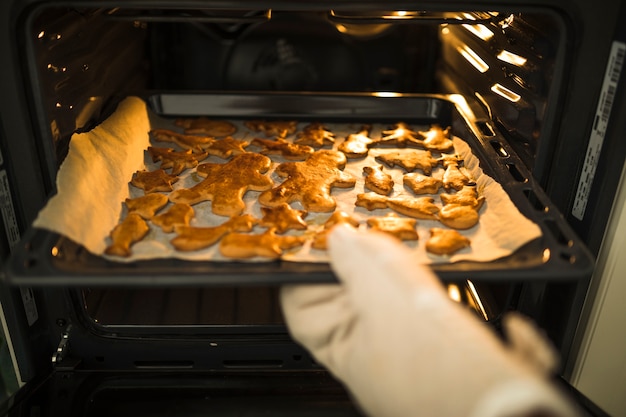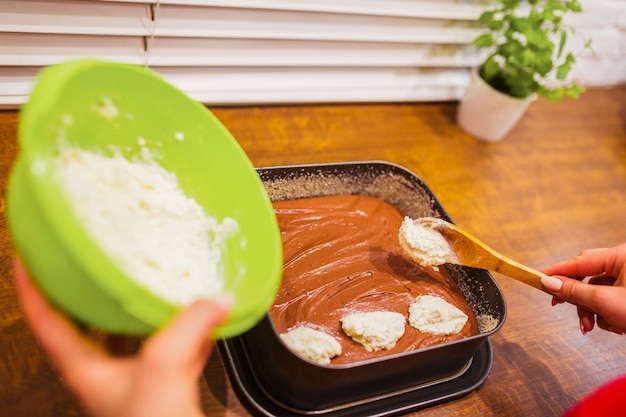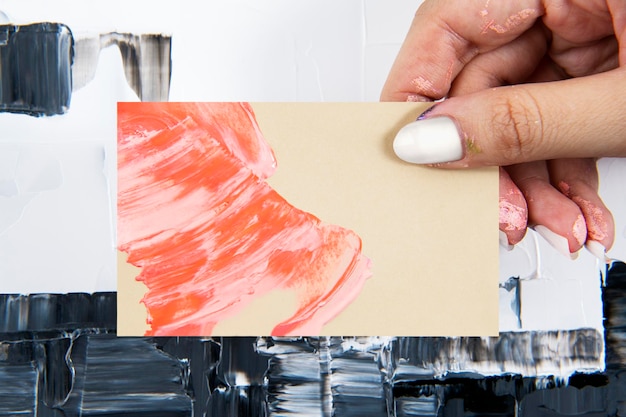For years, I've been a creature of culinary comfort, sticking to tried-and-true recipes like a good old chicken roast or a simple pasta dish. But recently, I've been yearning for something new, something more adventurous. And what better way to explore new culinary horizons than with the elegant and delicious salmon? I’ve always loved the taste of salmon, but I’ve had my fair share of overcooked, dry, and frankly, unappetizing disasters in the past. Determined to finally master this culinary gem, I’m ready to share everything I’ve learned about cooking the perfect salmon in the oven.
Join me on this exciting journey as we unravel the secrets of temperature, timing, and those little tricks that make all the difference. Together, we’ll transform your salmon from a potential dry, flaky nightmare into a succulent, flavorful masterpiece.
(Part 1) The Perfect Temperature

Finding the Sweet Spot
The key to perfectly cooked salmon lies in achieving that golden temperature sweet spot—just cooked through, but still tender and moist. Too low, and it’ll take forever, and we all know those impatient moments when dinner is late! Too high, and you’ll end up with a tough, rubbery piece of fish, which is a culinary tragedy waiting to happen. The general consensus is 180°C (350°F) is ideal, but it’s not as simple as just setting your oven dial. Factors like the salmon's thickness, your oven's personality, and your desired level of doneness all come into play.
Oven Calibration: The Truth About Your Oven
Don't blindly trust the dial on your oven. It's like that friend who always tells you they're "fine" when you know they're secretly feeling anything but. Ovens have a mind of their own, some running hotter, others running colder, like they're trying to play a game of culinary roulette. It’s time to break free from the uncertainty and embrace the truth! Invest in a simple oven thermometer. It’s like a truth serum for your oven, revealing the real temperature inside. You might be shocked at the difference between the dial and the actual temperature! If your oven runs hot, you’ll need to dial it down a bit. If it runs cold, you’ll need to crank it up. Once you know your oven’s true personality, you can adjust your cooking times accordingly.
(Part 2) Timing is Everything

The Thickness Factor
Think of salmon thickness as the key to unlocking the perfect cooking time. A thin fillet is like a quick sprint, while a thick one is more of a leisurely jog. A general rule of thumb is 12-15 minutes per inch of thickness. But remember, timing is a delicate dance, and you wouldn’t want to step on the toes of your salmon!
Checking in on Your Salmon: Don't Be Shy
Speaking of those dance moves, don't be afraid to check in on your salmon throughout the cooking process. This is where the meat thermometer truly shines, allowing you to peek into the heart of your salmon and ensure it’s cooked to perfection. The magic number you’re looking for is 145°F (63°C). Another way to gauge doneness is the "fork test." Gently insert a fork into the thickest part. If the flesh flakes easily, it's ready to party! But if it’s still fighting back, it needs a little more time in the oven.
Overcooked? It's Not the End of the World!
We've all been there—the fear of overcooking. It’s like that moment when you accidentally spill red wine on your white carpet. But don’t panic! Overcooking salmon isn’t a culinary crime. It might be a little drier than ideal, but it’s still edible. Just remember to keep a watchful eye and be ready to adjust. It’s always better to err on the side of slightly undercooked than to dry out your salmon.
(Part 3) Getting the Right Texture

The Flaky, Tender Dream
Who hasn’t experienced that sinking feeling when you take a bite of salmon, expecting a burst of flavor and tenderness, only to find a dry, flaky, cardboard-like texture? The key to that dream-worthy, tender, flaky texture is cooking just long enough for the inside to reach the perfect temperature. This is where that trusty meat thermometer truly earns its keep!
The Overcooking Trap
Overcooking is the salmon’s worst enemy, like the villain in a culinary drama. It’s tempting to keep it in the oven a little longer, just to be on the safe side. But trust me, it’s better to err on the side of undercooked. A slightly undercooked salmon will still be juicy and tender, while overcooked salmon becomes dry and crumbly. Remember, we’re aiming for a happy salmon, not a sad one! So, check the internal temperature and take it out when it hits 145°F (63°C).
(Part 4) The Art of Seasoning
Simple is Often Best
Salmon is a delicate fish with a natural flavor that shines brightest when it’s not overwhelmed by too many spices. Think of it like a delicate flower—it needs just the right amount of attention. A sprinkle of salt and pepper is often enough to bring out the best in your salmon. But if you want to add a touch of extra flavor, try fresh herbs like dill, parsley, or thyme. These herbs are like the finishing touches to a beautiful painting, adding just the right amount of depth and complexity.
Citrus Delights
Citrus flavors bring a bright, refreshing touch to salmon, like a burst of sunshine on a cloudy day. A squeeze of lemon juice or a sprinkle of zest can transform your salmon into a citrusy masterpiece. You can even experiment with other citrus fruits like orange or lime, but remember, a little goes a long way!
Marinade Magic
For a truly flavorful experience, consider marinating your salmon before cooking. A simple marinade with olive oil, lemon juice, and herbs can infuse the fish with delicious flavor. Think of it as giving your salmon a luxurious spa treatment, infusing it with flavor and moisture. Marinate for at least 30 minutes, and up to a few hours, for the ultimate sensory experience.
(Part 5) Mastering the Art of Roasting
The Right Pan for the Job
You’ve got your salmon, you’ve got your seasoning, now it’s time to find the perfect pan. I prefer a baking dish or roasting pan, as they provide ample space for the salmon to stretch out and cook evenly. Just like you wouldn’t want to cram all your friends into a tiny room, you wouldn’t want to overcrowd your salmon.
Adding a Touch of Moisture
A little bit of liquid in the bottom of the pan can create a moist and flavorful environment for your salmon. Water works, but I prefer to get a little fancier with white wine, chicken broth, or even a splash of apple cider vinegar. This creates steam that gently wraps around your salmon, keeping it moist and succulent.
Foil: A Safety Net for Your Salmon
If you’re feeling a little apprehensive about your salmon drying out, don't fret! Wrap it in foil before roasting. This creates a cozy cocoon of moisture, ensuring your salmon cooks evenly and stays juicy. Just remember to remove the foil for the last few minutes to allow the salmon to brown and crisp up.
(Part 6) Cooking Salmon in the Oven: A Step-by-Step Guide
Let’s bring all this knowledge together and create a simple, step-by-step guide to cooking salmon in the oven.
- Preheat your oven to 180°C (350°F). Just like you wouldn't want to jump into a cold swimming pool, you don't want to put your salmon in a cold oven.
- Prepare your salmon by rinsing it under cold water and gently patting it dry. It’s like giving your salmon a refreshing shower! Season it with salt, pepper, and any other desired spices or herbs.
- Place the salmon in a baking dish or roasting pan. You can add a little bit of liquid to the bottom of the pan to help keep the salmon moist.
- If desired, wrap the salmon in foil to prevent it from drying out.
- Roast the salmon in the preheated oven for 12-15 minutes per inch of thickness. Check the internal temperature with a meat thermometer to ensure it reaches 145°F (63°C).
- Remove the salmon from the oven and let it rest for a few minutes before serving. This allows the juices to redistribute, ensuring a more flavorful and tender salmon.
(Part 7) A Few Extra Tips
Don't Overcrowd the Party
If you’re cooking multiple pieces of salmon, make sure you don't overcrowd the pan. Just like you wouldn’t want to cram all your friends into a tiny room, you wouldn’t want to overcrowd your salmon. This will prevent the salmon from cooking evenly.
Skin-On or Skin-Off? It's Your Choice
The choice of skin-on or skin-off salmon is entirely yours. Personally, I prefer skin-on, as it helps prevent the flesh from sticking to the pan and keeps the salmon moist. But if you’re not a fan of the skin, you can remove it before cooking.
leftover salmon: Don't Waste This Culinary Treasure!
Leftover salmon is like a culinary gift that keeps on giving! It’s delicious in salads, sandwiches, and wraps. You can also flake it into pasta dishes or use it to make salmon patties. Just make sure to refrigerate the leftover salmon within two hours of cooking and use it within 3-4 days.
(Part 8) Salmon Dishes: Beyond the Basics
grilled salmon: A Summer Delight
While we’ve been focusing on oven-baked salmon, there are other ways to enjoy this delicious fish. For a summery flavour, try grilling salmon over an open flame. It’s like a culinary campfire, infusing the salmon with a smoky, wood-fired flavor. Simply season the salmon with salt, pepper, and your favourite herbs, then grill over medium heat for about 4-6 minutes per side. A drizzle of lemon juice or a sprinkle of citrus zest adds a bright touch to this summery dish.
smoked salmon: A Delicate Culinary Treat
For something truly special, consider trying smoked salmon. It’s like a culinary masterpiece, slowly smoked over wood chips, giving it a unique and intense flavor. It’s often served as a starter or appetizer, but it’s also delicious in salads, pasta dishes, and sandwiches. It’s a delectable addition to breakfast bagels or cream cheese.
Pan-Seared salmon: A Quick and Easy Option
If you're looking for a quick and easy option, pan-searing is the way to go. Think of it as a culinary speed dating, where the salmon meets hot oil and falls in love with the crispy crust. Heat a drizzle of oil in a non-stick pan over medium heat, then sear the salmon for about 3-4 minutes per side, until it’s cooked through and has a nice crust. You can then add a splash of white wine or lemon juice to the pan and deglaze it to create a delicious sauce.
(Part 9) Recipes: Putting Your Knowledge into Practice
salmon with lemon and Dill: A Classic Delight
This is a timeless recipe that is both simple and delicious, like a classic love story that never gets old.
- Preheat oven to 180°C (350°F).
- Rinse and pat dry one salmon fillet.
- Season the salmon with salt, pepper, and a pinch of dried dill.
- Place the salmon in a baking dish and drizzle with olive oil.
- Squeeze a wedge of lemon over the salmon and sprinkle with lemon zest.
- Roast the salmon in the preheated oven for 12-15 minutes, or until the internal temperature reaches 145°F (63°C).
Salmon with Roasted Vegetables: A Complete Meal
This recipe is a complete meal in itself, combining the best of both worlds—delicious salmon and nutritious vegetables.
- Preheat oven to 200°C (400°F).
- Wash and chop vegetables such as broccoli, carrots, and potatoes into bite-sized pieces.
- Toss the vegetables with olive oil, salt, pepper, and your favourite herbs.
- Spread the vegetables in a baking dish and arrange the salmon fillet on top.
- Roast for 20-25 minutes, or until the vegetables are tender and the salmon is cooked through.
Salmon with Creamy Dill Sauce: A Symphony of Flavors
This recipe is a delightful combination of creamy and tangy flavors, like a culinary dance between sour cream and dill.
- Preheat oven to 180°C (350°F).
- Rinse and pat dry one salmon fillet. Season with salt and pepper.
- Place the salmon in a baking dish and bake for 12-15 minutes, or until cooked through.
- While the salmon is cooking, make the creamy dill sauce. In a small bowl, whisk together sour cream, mayonnaise, chopped dill, lemon juice, salt, and pepper.
- Serve the salmon topped with the creamy dill sauce.
(Part 10) FAQs: Answering Your Burning Questions
Q1: Can I cook frozen salmon in the oven?
A: Yes, you can cook frozen salmon in the oven. However, it will take longer to cook than fresh salmon. Add an extra 10-15 minutes to the cooking time. Make sure the internal temperature reaches 145°F (63°C) for safe consumption.
Q2: How do I prevent the salmon from sticking to the pan?
A: There are a few ways to prevent salmon from sticking to the pan. One is to make sure the pan is well-greased with oil. Another is to line the pan with parchment paper or foil.
Q3: What are some good side dishes to serve with salmon?
A: There are endless possibilities when it comes to side dishes for salmon. Some popular choices include roasted vegetables, quinoa, rice, couscous, asparagus, green beans, and salad.
Q4: How long can I keep leftover salmon in the refrigerator?
A: You can keep leftover salmon in the refrigerator for 3-4 days. Make sure it is stored in an airtight container or wrapped tightly in plastic wrap.
Q5: Can I freeze cooked salmon?
A: Yes, you can freeze cooked salmon. It’s best to freeze it in an airtight container or freezer-safe bag. Frozen cooked salmon can be kept for up to 2-3 months.
(Part 11) Conclusion: A culinary adventure
Cooking salmon in the oven has been a real culinary adventure for me. I’ve learned so much about temperature, timing, and the importance of a meat thermometer. I’ve also discovered the beauty of simple seasonings and the joy of experimenting with different flavor combinations. From classic lemon and dill to creamy dill sauce, there’s a world of possibilities when it comes to flavoring salmon. So, don’t be afraid to try something new and experiment with different recipes. You might just discover your new favorite salmon dish.
Remember, the key to perfectly cooked salmon is to cook it to the right temperature, to make sure it’s moist and tender, and to season it simply and effectively. With a little practice, you can become a salmon master in no time. So, go forth and cook with confidence, knowing that you have all the knowledge and inspiration you need to create delicious and healthy salmon meals.
Everyone is watching

Corn on the Cob: The Ultimate Guide to Perfectly Cooked Ears
Healthy MealsAh, corn on the cob. Just the name evokes images of sunny days, barbecues, and that sweet, juicy flavour that ...

Scallops: The Ultimate Guide to Perfect Cooking
Healthy MealsAh, scallops. Those delicate, sweet, and utterly delicious morsels of the sea. They hold a special place in my...

Spaghetti Squash: The Ultimate Guide to Cooking and Serving
Healthy MealsRemember that time you saw spaghetti squash at the supermarket, looking all bumpy and strange, and thought, "W...

Salmon Cooking Times: Perfect Guide for Every Recipe
Healthy MealsLet me tell you, cooking salmon is an art form. It's all about getting that perfect balance: juicy and tender,...

Ham Cooking Time: How Long to Bake, Smoke, or Boil a Delicious Ham
Healthy MealsAh, ham. It's a classic, isn't it? A real crowd-pleaser, especially around holidays. And when done right, it'...
